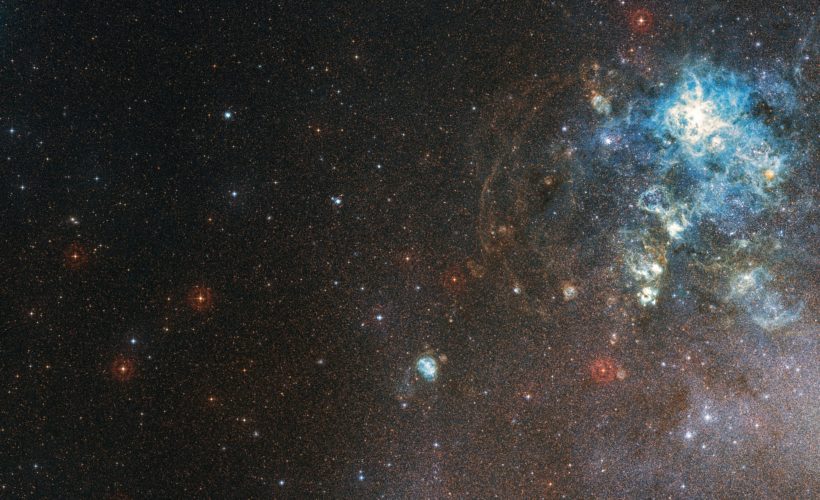We might say it all the time, but this week brings a truly epic romp across the universe. First we’ll hang out at the Large Magellanic Cloud, a satellite galaxy of the Milky Way. Many galaxies like ours have smaller galaxies orbiting them, similar to a planet and a moon. The LMC is visible in the southern celestial hemisphere, where it can look to stargazers like a hazy cloud. Astronomers think that it used to be more spiral and more intact, but interactions with our massive galaxy disrupted its form, warping it into more of a diffuse yet still colorful blob.
Speaking of clouds, let’s check out a relative newcomer to Jupiter’s roster of massive storms: Oval BA, measuring about 5,000 miles across. (Not to be upstaged, the Great Red Spot tries to photobomb.) We also have to bid adieu to NASA’s Kepler and admire its farewell photograph. This intrepid spacecraft launched in 2009 and was tasked with detecting planets around other stars. Over its lifetime, Kepler spotted more than 2,600 so-called exoplanets, from Venus-sized and super-Earth planets to Jupiter-level giants.
Kepler was also seeking out planets in the “habitable zone” of solar systems, which is roughly where Earth lives: Orbit too close to the central star and the planet gets flash-fried, go too far away and it ends up like Hoth. After nine amazing years in service, Kepler finally ran out of fuel and was no longer able to point itself toward the great beyond of space. On its retirement in October, NASA shared the spacecraft’s last view before sign-off.
See you on the other side, noble Kepler. Until then, we honor you with WIRED’s full collection of space photos, here.
More Great WIRED Stories
- A crypto CEO dies—with the only key to $137 million
- Probe your pupper’s genetic secrets with these DNA kits
- The WIRED guide to commercial human space flight
- Apple, the iPhone, and the innovator’s dilemma
- The trash-talking furry dominating esports
- ? Looking for the latest gadgets? Check out our latest buying guides and best deals all year round
- ? Want more? Sign up for our daily newsletter and never miss our latest and greatest stories
Source:WIRED










